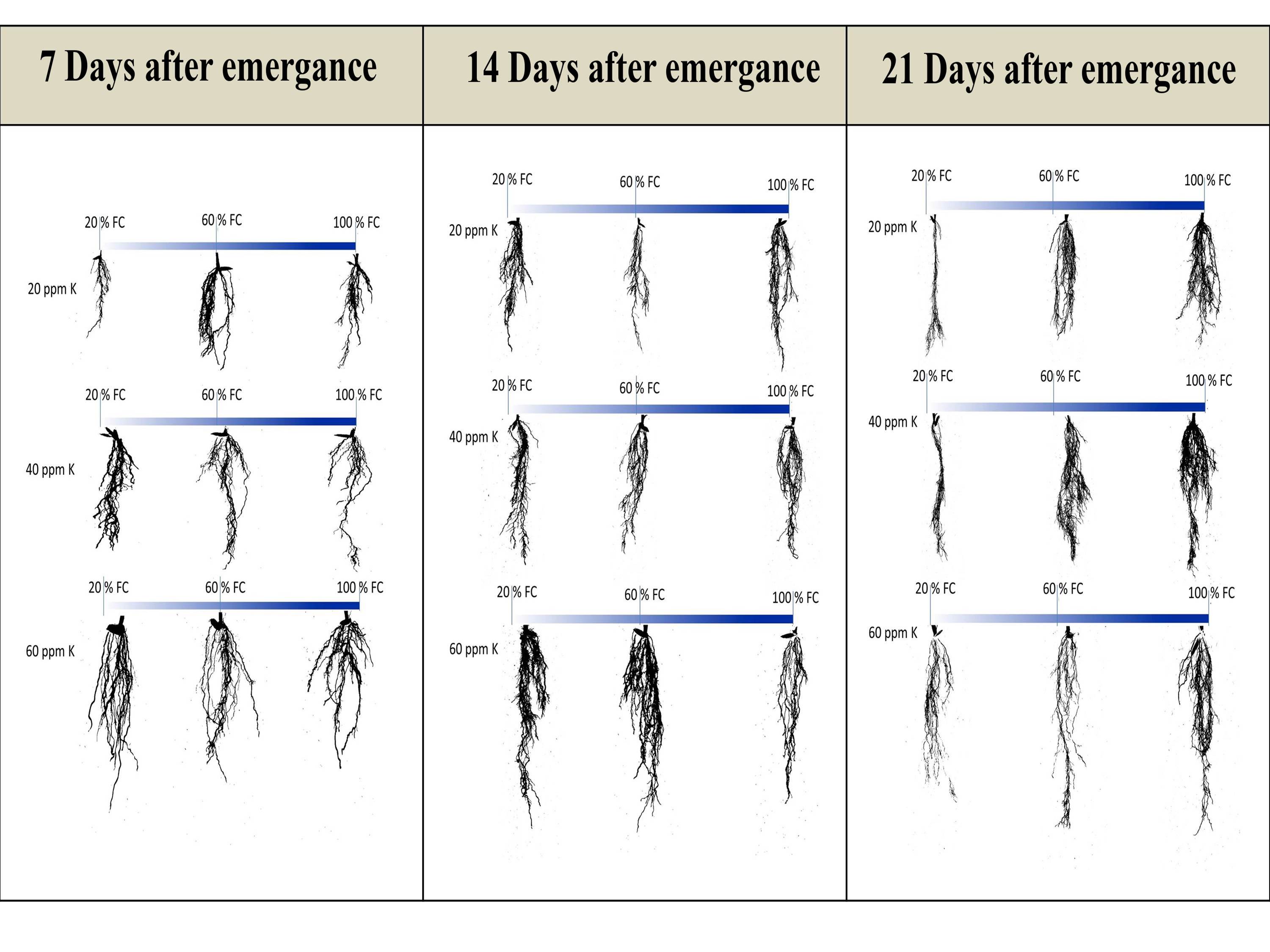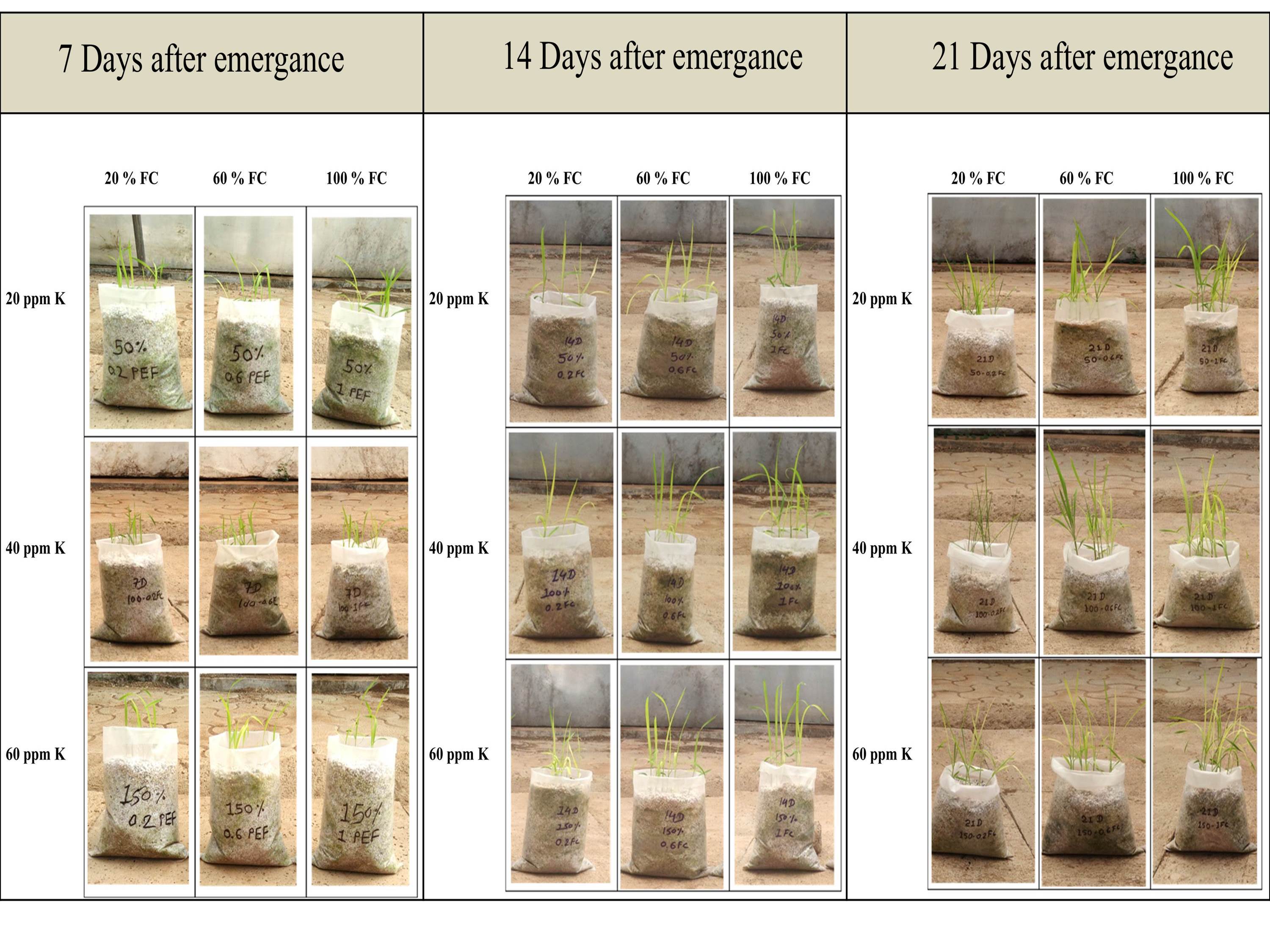The availability of water is becoming an urgent factor in crop productivity in both developing and developed countries, particularly in drought-prone areas. One-third of the world’s rice cultivated in rainfed lowlands and 13% in upland rainfed fields where the lack of rainfall makes cropping impossible without irrigation.
In India, more than 60% of the arable land is in arid and semi-arid regions marked by a long dry season and inadequate and unpredictable rainfall. Drought can have a devastating effect on India’s rice production because most farmers practice paddy culture. Therefore, identifying traits of rice that enable it to survive droughts, along with cropping management practices, that mitigate the impact of water scarcity are important research areas, particularly under the projected climate change scenarios.
One management approach for making crops more resilient to drought involves applying potassium fertilizer at a higher rate. Potassium is known to contribute to greater water retention in plant tissues through various physiological processes. The nutrient also plays a role in modulating the root growth and architecture of the plant. It is potassium’s effect on the roots that offers promising potential because the roots are essential in detecting and absorbing water and nutrients in the soil. A deeper understanding of how potassium modifies the root system architecture to make plants more efficient in absorbing water could support the development of effective management practices for drought-prone areas.
Dipika Patel, in her graduate research at the Navsari Agricultural University in Gujarat India, conducted a preliminary study on how the root of rice seedlings (NAUR-1) react to potassium and moisture stress. Ms. Patel observed significant differences in the root system (projected area, average density, maximum width, top and bottom angles, and depth and maximum width-to-depth ratio) under different levels of potassium, moisture stress, and their interactions (Fig. 1).
“As the moisture stress level increased, the plants started producing roots with a significantly reduced projected area, average density, maximum width of the root system, and width-to-depth ratio. But we found an increase in the rooting depth as the plant roots grow deep in search of water,” Ms. Patel said. “But the higher level of potassium under moisture stress condition was found to be helpful in lessening the reduction in the projected root area and the maximum width of the root system while increasing the rooting depth.
At the higher amount of potassium, rice seedling roots were able to maintain narrow root top and bottom angle under moisture stress which would help the plant explore a wider surface area for water and more nutrients for maintaining seedling growth (Fig. 2).
“However, the effect of potassium was more alleviating at mild water stress,” Ms. Patel noted. “With severe water stress, the beneficial effects of potassium on root system were not very pronounced and the root architecture seemed to be determined more by water than the amount of potassium.”
________________
Dr. Bardhan is an assistant professor (crop physiology) at ASPEE College of Horticulture and Forestry, Navsari Agricultural University, India.









